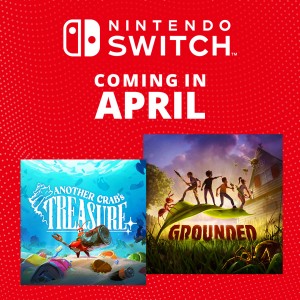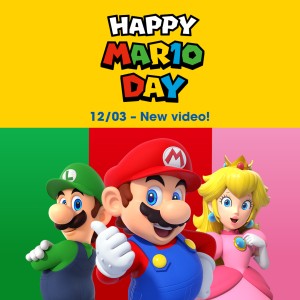Interview: Pirates of the Caribbean (DS)
08/06/2007
After the success of Pirates of the Caribbean: Dead Man's Chest for the Nintendo DS, Amaze Entertainment developed the handheld game for the third instalment in the movie's franchise: At World's End. We sat down with producer Ryan Silva to find out more about transporting the swashbuckling antics of Captain Jack Sparrow and his friends to the double-screened handheld...
Nintendo of Europe: This is the second Pirates of the Caribbean game that Amaze has developed for Nintendo DS. Can you tell us what your team set out to do to one-up the first game you developed for the platform?
Ryan Silva: "Pirates of the Caribbean: Dead Man's Chest was designed primarily around its combat system. For the sequel, Pirates of the Caribbean: At World's End, we worked closely with Disney Interactive Studios to come up with ways to provide a more varied player experience with more opportunities to explore and interact with the game world. Early on, we knew that we wanted to add more swashbuckling acrobatics to the mix and we also looked for opportunities to leverage the Nintendo DS hardware in innovative ways. The duelling system was the primary attempt to fulfil the latter design goal."
NoE: The sword-fighting mechanics in the boss confrontations are great! How did the idea of blocking with the +Control Pad/Buttons and making sword strokes with the stylus come about?
RS: "The initial inspiration to create a stylus-driven duelling system came out of early brainstorming sessions with Disney Interactive Studios just after Dead Man's Chest shipped. We knew that we wanted to make better use of the Touch Screen in the sequel and sword-fighting was a natural fit. That said, creating a compelling and intuitive combat system took a lot of iteration. In fact, much of the game's early development centred around that feature.
"We tried several different control schemes before hitting on one that felt right, including configurations that used only the Touch Screen. The combined stylus and buttons approach kept attack and defence separate and in the heat of battle, that seemed to make all the difference for players.
"One of the biggest challenges the team faced was providing a deep enough system to allow sufficient strategic options for the player yet still leave us room for the rest of the game content. As it turned out, just the animations for the duellists with all of their moves, disarms and mid-duel cinematics took up nearly half of the Game Card!
"Challenges aside, the team feels that the duelling system adds a truly unique component to the game that you really can't find anywhere else.
"Here's a game tip: Don't forget to use your taunt for double-damage attacks (R or L Button)."
NoE: To open some doors and to unlock treasure chests, players essentially take part in Touch Screen mini-games to yield a reward. Why did you decide to develop those aspects of the game this way instead of letting characters freely open chests or find random keys?
RS: "Throughout the project, we kept asking ourselves 'What would a pirate do?' Many of the design decisions, (sneak attacks, lock picking instead of using keys) came from that thought process. Pirates don't use keys unless they steal them and we fell in love with the idea of a quick micro-game that helped the player 'become' the pirate. In addition, these features allowed us to leverage the Touch Screen in unique ways and further separate At World's End from the competition.
"The primary challenge was to keep the Touch Screen micro-games short enough so that they never wore out their welcome, but still compelling enough to be seen as more than busy work. It was also a bit of a challenge to time the transitions from main game to micro-game so that switching between button and stylus controls was not too jarring. We feel that the final results were worth it."
NoE: A lot of work has been put into the level design and the sheer length of each level. How long did it take your team to implement the level design, from inception to completion, and what do you hope players take away from the 3D experience as opposed to a 2D adventure?
RS: "Each level took several weeks to design and tune. They began as paper designs featuring walkthrough text, and basic level layouts were blocked out in an off-the-shelf 3D program. This stage was fairly quick, just a couple of days. From there it was handed to the environment artists who created the basic level geometry and collision called a white box. This was play-tested for several days to fine-tune the platforming aspects, script enemy encounters and set up the camera system.
"Once that took shape, it was again handed back to the environment artists to build the beautiful scenery and lighting that you see in the final game. Even then, the levels often went through several last-minute polish passes to tune combat and overall difficulty, as well as address any pesky camera issues."
NoE: Each character in the game can carry one alternate weapon - be it a whip, bomb, dagger and so on. What was the thinking behind allowing players to carry only one alternate weapon instead of keeping an inventory of weapons?
RS: "This was done to encourage the player to approach certain situations differently. If you have the whip (a close range, area of effect weapon) you will approach the combat differently than if you have the dagger (a single target weapon that poisons). Also some enemies are easier to defeat with certain weapons. If the player had access to all the weapons all the time, they would simply swap into the weapon that was best for the particular situation, eliminating much of the need to have different weapons at all.
"With the current system, the player has to make choices about how to approach each combat encounter and through that comes much of the fun and challenge."
NoE: Mr Silva, thank you very much for your time!
Pirates of the Caribbean: At World's End is now available for Nintendo DS and Wii. Click here to check out the games' offical site!





